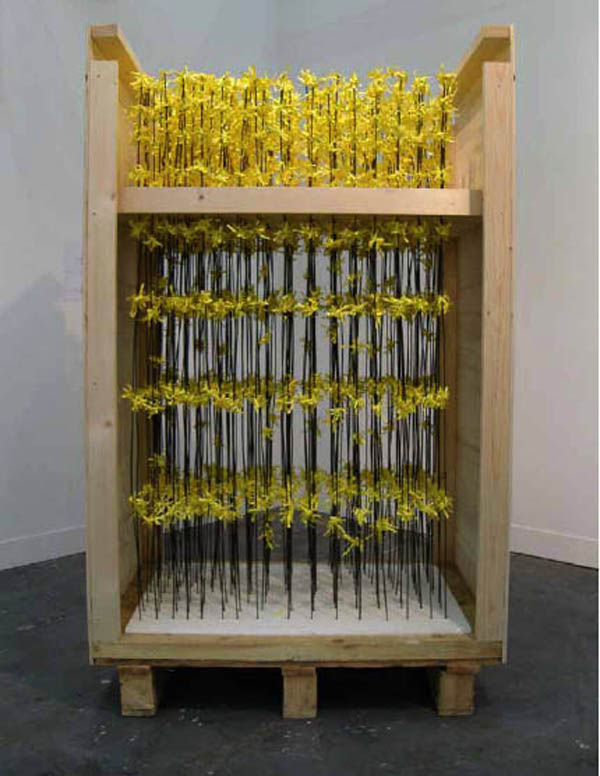You have given the world your songs
2018 - Installation (Installation)
111.76 x 139.7 cm
Francisca Benítez
You have given the world your songs by Francisca Benítez is a poem in American Sign Language (ASL). It employs ten handshapes arranged in a numbering sequence from 1 to 10. This visual rhyme sequence is standard in Deaf poetry, as is the Tenth in Latin American popular oral/written poetry traditions. The poem was inspired by Elizabeth Catlett’s 1947 lithograph I have given the world my songs at the invitation from Douglas Ridloff to collaborate in a performance at the Whitney Museum in 2018. Slavery, the fight for black liberation, and the artist’s role in articulating that struggle are all addressed in the poem. It expresses remorse and a call to action, urging everyone to continue on the path of justice as a shared responsibility. A printed diagram with a transcription of the poem generated in SignWriting–the sign system for movement and sign language transcription devised by Valerie Sutton in 1974–and translations into English and Spanish accompany the video. Benitez’s primary focus is American Sign Language poetry, which carries a level of physicality that naturally extends her study of architectural space. The literary genre of ASL poetry focuses on sign language, imitation, facial expression, and other theatrical components that allow the poet to draw attention to specific actions to communicate a message and emphasis. ASL calls for a different degree of attention–experienced on two levels than most hearing people are used to–the literal significance of words read aloud and how the words sound as they are composed by the poet. The latter level, which contains rhymes, repeated vowel and consonant sounds, rhythm, and pacing, is generally referred to as the language’s melody. Where the words are silent in ASL poetry, the music is visual, and rhymes or rhythms are based on handshape or gesture.
Francisca Benítez has studied the connection between language, space, and politics using various media throughout her career, including drawing, photography, video, and performance. Benítez began her career as an architect, but she has recently concentrated her creative practice on deaf culture and sign language, driven in part by her father’s early experience as a deaf child and the problems that deaf communities face in gaining access to their languages. Benítez has used sign language as a visual method of communication, gesture, and performance in several collaborative projects, driven by her desire to create encounters between deaf and hearing communities in art venues. Benítez received a bachelor’s degree in architecture from the Universidad de Chile in 1998 and master’s degree in fine arts from Hunter College-CUNY in 2007.
Colors:
Related artist(s) to: Francisca Benítez » Anders Kreuger, » Andrea Wiarda, » Anton Vidokle, » Daniel Faust, » Dieter Roelstraete, » Egon Hanfstingl, » Els Roelandt, » Hadley Nunes, » Jan Verwoert, » Joe Scanlan

© » KADIST
Anton Vidokle
2020Shot in Oliveto Lucano, a village in the south of Italy, AUTOTROFIA (meaning self-eating) by artist Anton Vidokle is a cinéma vérité style film that slides fictive characters into real situations, and vice-versa, to draw a prolonged meditation on the cycle of life, seasonal renewal, and ecological awareness...

© » KADIST
Joe Scanlan
2007Spring Line is a piece shown for the first time in his solo exhibition at the Institut d’Art Contemporain in Villeurbanne in 2007...
